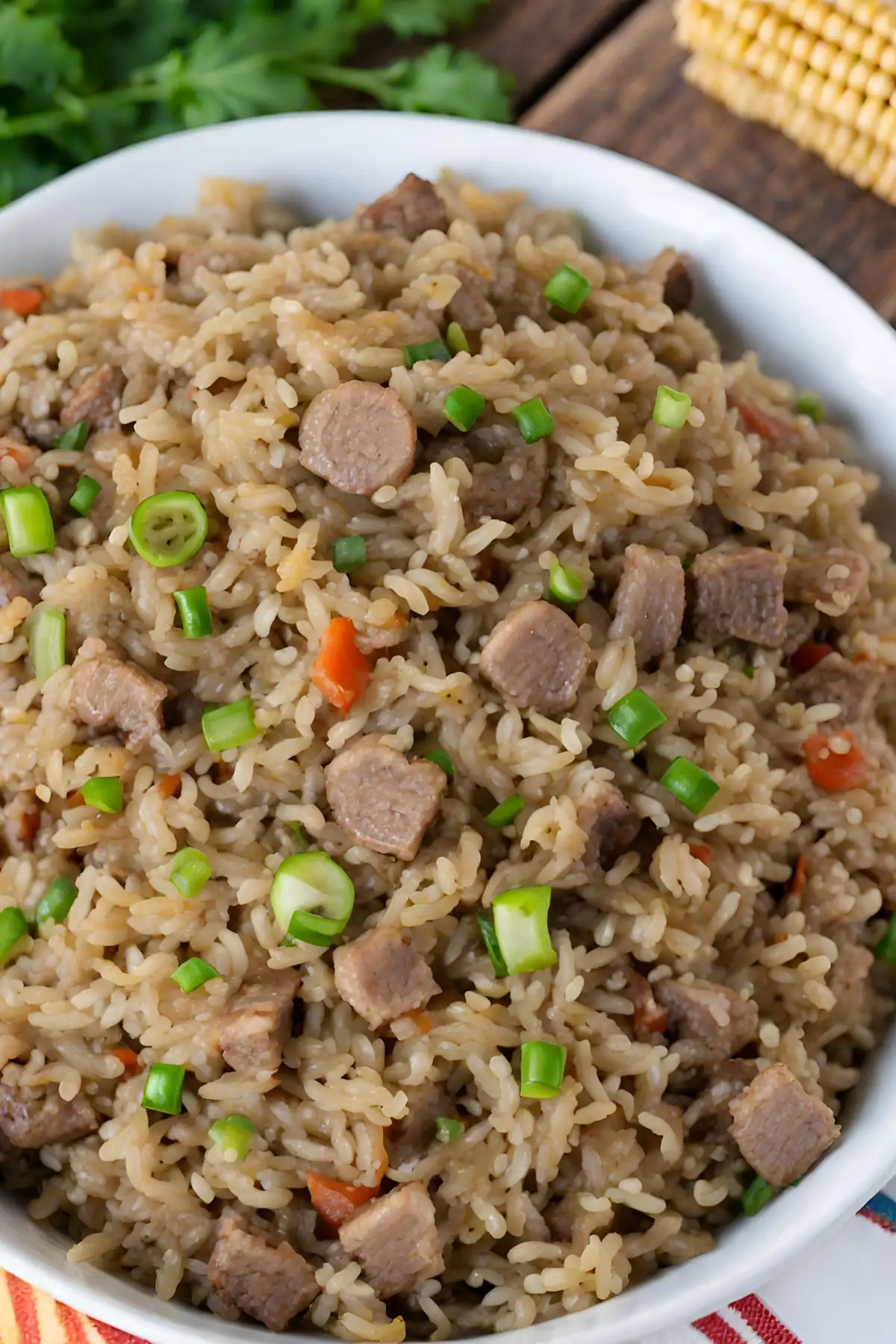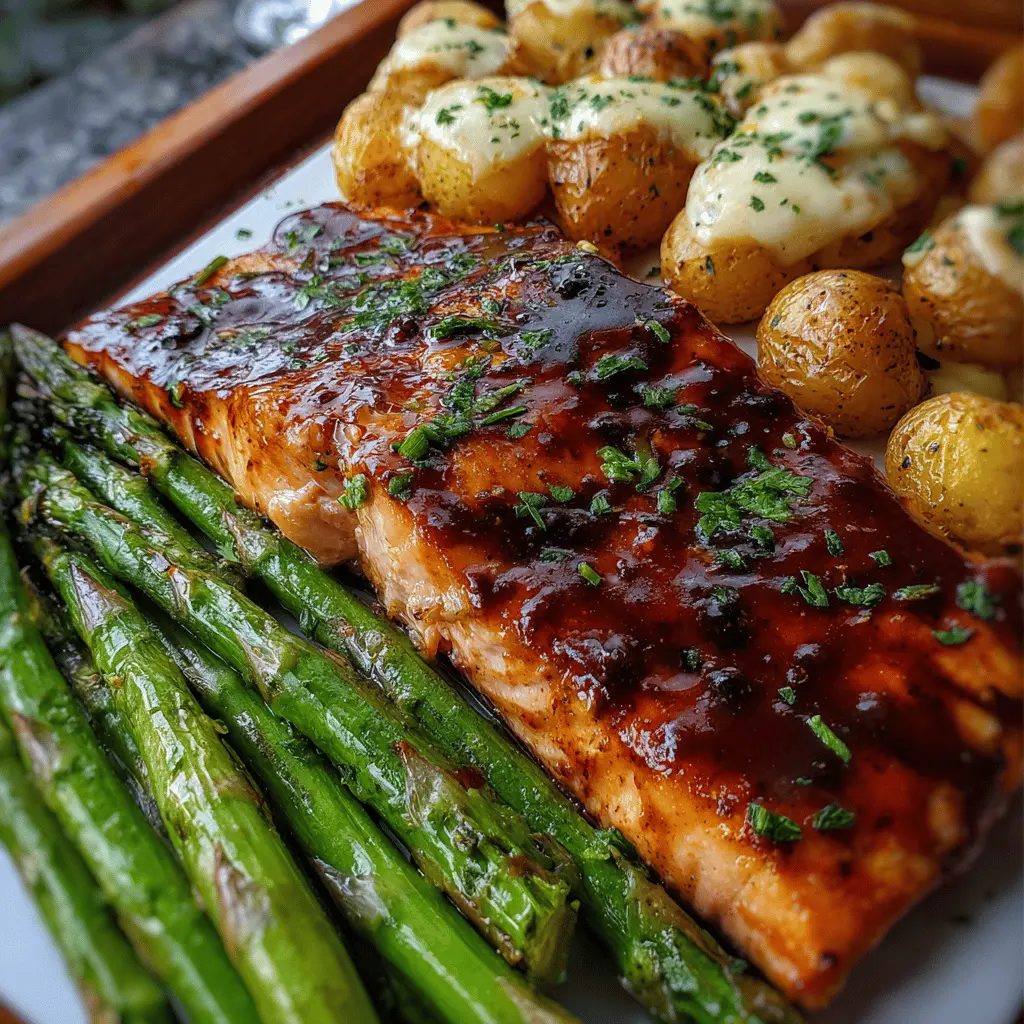Introduction to Dirty Rice
Dirty Rice is a quintessential dish deeply rooted in Cajun cuisine, characterized by its “dirty” appearance, which it owes to being cooked with small pieces of meat and liver that give the white rice a dark, muddy color. The dish has become a staple in the Southern United States, particularly in Louisiana, where it is not just a meal but a cultural emblem.
The name Dirty Rice comes from the appearance of the finished product, as the rice turns a “dirty” color from being cooked with the meat and spices. This dish is also known under different names such as Cajun Rice or Rice Dressing. Its simplicity, coupled with its rich flavors, showcases the ingenuity of Cajun cooking, making it a beloved component of the region’s culinary tradition.
Historical Background

The origins of Dirty Rice can be traced back to the early Cajun settlers in Louisiana, who were known for their ability to create hearty, flavorful meals from limited resources. The dish is a testament to the cultural melting pot of the region, blending elements from French, African, Spanish, and Native American cooking.
Dirty Rice has evolved over the years, but its essence remains a symbol of Southern comfort food. It reflects the history and resilience of the Cajun people, standing as a representation of the cultural diversity and culinary innovation found in the Southern United States.
Basic Ingredients
The traditional Dirty Rice recipe involves a combination of the following ingredients, which contribute to its unique flavor and appearance:
- Ground beef or pork
- Chicken livers or gizzards
- White rice
- Onions, bell peppers, and celery (known as the “Holy Trinity” in Cajun cooking)
- Cajun seasoning, salt, and pepper
Regional variations may introduce different meats or seasonings, but the core elements remain the same. The dish can be adapted based on available ingredients, making it a versatile option for any meal. For a deeper understanding of the dish’s components and variations, you can refer to resources like The Spruce Eats’ Dirty Rice Recipe or Small Town Woman’s take on Dirty Rice. These resources provide additional insights into the traditional and modern takes on this beloved dish.
Traditional Dirty Rice Recipe

The process of making Dirty Rice involves several steps, ensuring that each ingredient contributes to the final flavor. Here’s a step-by-step guide to creating this traditional Cajun dish:
- Prepare the Ingredients: Measure out your ingredients – typically, ground beef, chicken livers, white rice, the “Holy Trinity” (onions, bell peppers, and celery), and your Cajun seasoning.
- Cook the Meats: In a large skillet, cook the ground beef and chicken livers (or gizzards) until they are browned. This step is crucial for giving the rice its signature “dirty” look.
- Sauté the Vegetables: Add the chopped onions, bell peppers, and celery to the meat and cook until they are tender.
- Combine with Rice and Seasonings: Add the uncooked rice, Cajun seasoning, salt, and pepper to the skillet. Stir the mixture to ensure that the rice is fully coated with the seasonings and meat mixture.
- Add Liquid and Simmer: Pour in chicken broth or water, bring to a boil, then reduce the heat and simmer until the rice is cooked through.
- Rest and Serve: Remove the skillet from heat and let it sit covered for about 5 minutes. Fluff the rice before serving to ensure it doesn’t stick together.
For detailed instructions and additional tips, visit Hank Shaw’s guide to Cajun Style Dirty Rice, which offers a deeper dive into the cooking process and ingredient nuances.
Variations of Dirty Rice

Dirty Rice is a versatile dish that can be adapted to suit different dietary needs and preferences:
- Meat Variations: While traditional recipes call for chicken livers and ground beef, you can also use ground chicken, sausage, or beef to vary the flavor.
- Vegetarian and Vegan Alternatives: Replace the meat with mushrooms, diced eggplant, or a plant-based meat substitute. Use vegetable broth instead of chicken broth to maintain the savory depth without animal products.
- Additional Ingredients: Some variations include adding bell peppers, jalapeños, or different spices to alter the flavor profile.
Each variation maintains the fundamental essence of Dirty Rice while providing new experiences for your palate. For alternative recipes and ideas, consider exploring The Spruce Eats’ take on Dirty Rice, which offers options for different dietary needs.
Serving Suggestions
Dirty Rice can be served as a main dish or a hearty side. Here are some recommendations for serving and presentation:
- Accompaniments: Serve with green salad, cornbread, or steamed vegetables to balance the richness of the rice.
- Presentation Tips: Garnish with chopped green onions or parsley to add a pop of color and freshness to the dish.
This dish pairs well with other Cajun and Creole favorites, enhancing the dining experience with a burst of Southern flavor and comfort.
Nutritional Information and Health Aspects

Nutritional Profile
Dirty Rice, a staple in Cajun cuisine, is known for its high energy content and rich flavors. Typically, this dish is packed with proteins from the meats used, such as chicken livers, sausage, and beef, providing essential amino acids necessary for muscle repair and growth. However, it is also high in fats, particularly if made with higher-fat meats and oils.
The dish provides a good amount of carbohydrates from the white rice, offering energy for daily activities. It’s also a source of various vitamins and minerals from the “Holy Trinity” (onion, bell peppers, and celery), including Vitamin C, Vitamin A, and potassium. However, traditional Dirty Rice can be high in sodium and cholesterol, depending on the ingredients used, which could be a concern for individuals with certain health conditions.
Modifying Recipes for Health
To make Dirty Rice healthier and more accessible to those with dietary restrictions, consider the following tips and substitutions:
- Use brown rice or quinoa instead of white rice for added fiber and nutrients.
- Opt for lean meats like ground turkey or chicken breast instead of beef or pork to reduce fat content.
- Increase the quantity of vegetables, adding more bell peppers, celery, and onions, or even incorporating additional veggies like spinach or kale for extra nutrients.
- For a low-sodium version, use low-sodium chicken broth and reduce the amount of added salt.
- To cater to vegetarian or vegan diets, substitute meats with plant-based alternatives like lentils or tempeh and use vegetable broth instead of chicken broth.
For more detailed guidance on creating healthier versions of traditional dishes, including Dirty Rice, you might explore resources like Hank Shaw’s healthier take on Cajun Style Dirty Rice which provides alternatives and modifications suited for various health needs and dietary preferences.
Additional Information and FAQs

Cooking Techniques and Tips
Achieving the perfect Dirty Rice involves mastering a few key techniques:
- Rice Preparation: Rinse the rice thoroughly until the water runs clear to remove excess starch, preventing the rice from becoming too sticky.
- Meat Cooking: Ensure meats are well browned for deep flavors. If using liver, cook it separately to avoid overcooking while integrating it fully into the dish.
- Simmering: Cook the rice on a low simmer and avoid removing the lid frequently to maintain temperature and moisture.
Common mistakes to avoid:
- Overcooking the rice, which can lead to a mushy texture.
- Underseasoning, which can make the dish taste bland. Cajun seasoning should be used generously but adjusted to taste.
- Using high heat, which can cause the bottom of the rice to burn before the rest is fully cooked.
FAQs
- Can Dirty Rice be made in advance? Yes, it reheats well, making it a great make-ahead dish.
- Can I use different meats? Absolutely, Dirty Rice is versatile. Chicken, sausage, and beef are popular, but you can use what you have on hand.
- Is Dirty Rice gluten-free? Typically, yes, but always check the ingredients of your sausage and broth to be sure.
For more insights and professional tips on creating the perfect Dirty Rice, consider visiting culinary sites like The Spruce Eats for detailed recipes and cooking guides.
Conclusion and Resources
In conclusion, Dirty Rice is a flavorful, comforting dish deeply embedded in Cajun culture. It’s versatile and can be adapted to suit various dietary needs and preferences. Remember, the key to perfect Dirty Rice lies in the preparation and cooking techniques. For further exploration and recipes, resources such as Hank Shaw’s website or Small Town Woman’s recipe guide offer extensive information and variations on this classic dish.
Print
Dirty Rice
- Total Time: 40 minutes
- Yield: 6 servings
Description
Dirty Rice is a traditional Cajun dish that features white rice cooked with ground meat, chicken liver, vegetables, and Cajun spices, resulting in a flavorful and hearty meal.
Ingredients
- 1 cup white rice
- 1/2 pound ground beef
- 1/2 pound chicken livers, finely chopped
- 1 onion, diced
- 1 green bell pepper, diced
- 2 stalks celery, diced
- 2 cloves garlic, minced
- 2 teaspoons Cajun seasoning
- Salt and pepper to taste
- 2 cups chicken broth
- 1/2 cup green onions, sliced
- 1/4 cup parsley, chopped
Instructions
- Rinse the rice under cold water until the water runs clear.
- In a large skillet, cook the ground beef and chicken livers over medium heat until browned.
- Add the onion, bell pepper, celery, and garlic, cooking until vegetables are soft.
- Stir in the Cajun seasoning, salt, and pepper.
- Add the rice and chicken broth; bring to a boil. Reduce heat, cover, and simmer for 20 minutes.
- Remove from heat and let sit, covered, for 5 minutes. Fluff with a fork.
- Garnish with green onions and parsley before serving.
Notes
For a spicier dish, add more Cajun seasoning or a pinch of cayenne pepper. For a healthier version, use brown rice and lean ground turkey.
- Prep Time: 10 minutes
- Cook Time: 30 minutes
- Category: Main Dish
- Method: Stovetop
- Cuisine: Cajun/Creole
Nutrition
- Serving Size: per serving
- Calories: 350
- Sugar: 1g
- Sodium: 950mg
- Fat: 15g
- Saturated Fat: 5g
- Carbohydrates: 35g
- Fiber: 2g
- Protein: 20g
- Cholesterol: 180mg









